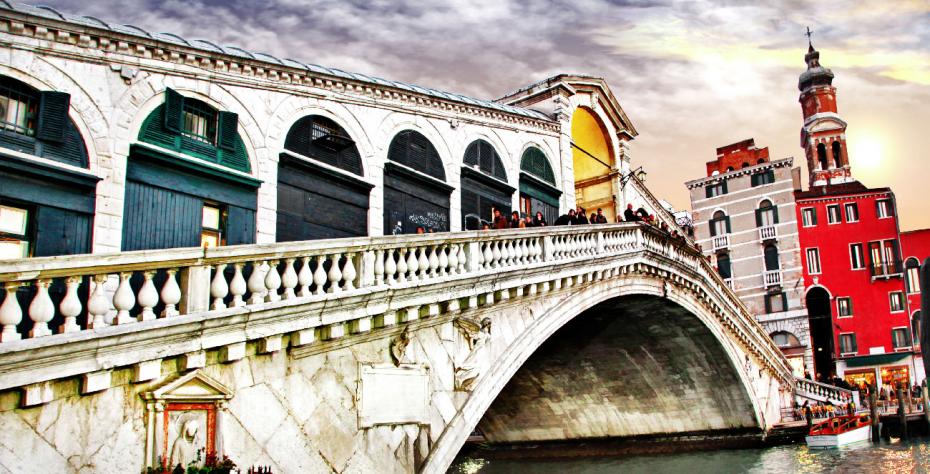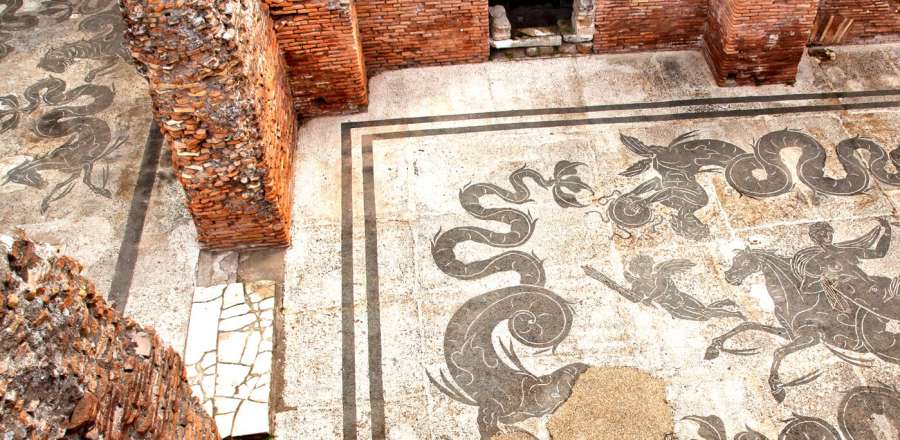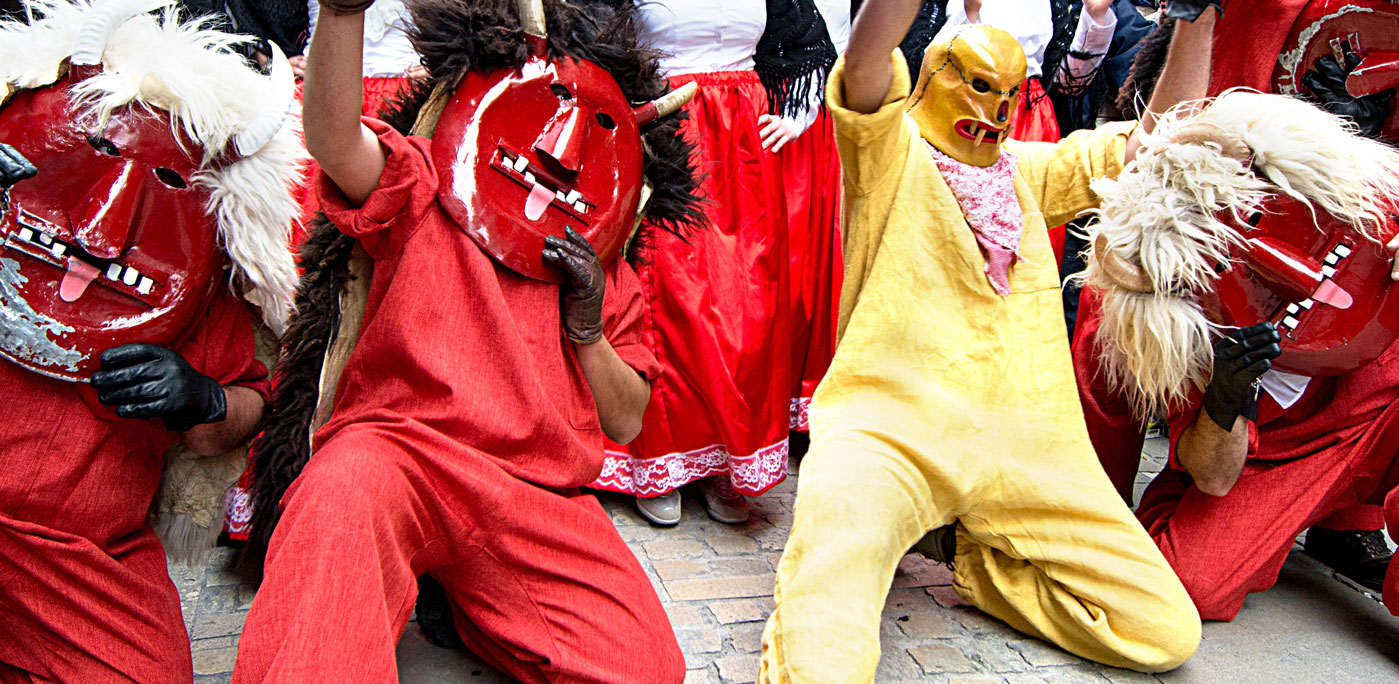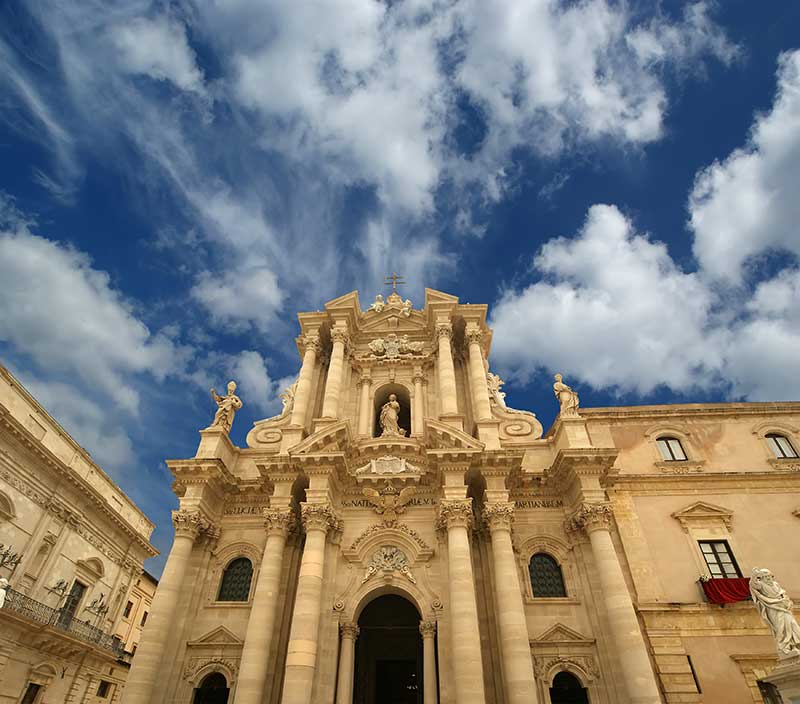Venice’s iconic Rialto Bridge is on everyone’s Top 10 must-see list. But apart from taking a selfie at the top or a beautiful panoramic photo down the Grand Canal, few stop to consider the history behind the bridge. Fewer still realize that this is the sixth crossing on the site or that Michelangelo, one of Italy’s greatest artists, was linked to its design. At 425 years old it is the oldest bridge across the canal so let’s stop for a closer look.
The first bridges
Venice is a city of water. Over 170 canals surround 117 islands making up the historic centre. And over 400 bridges big and small tie it all together. But the Ponte di Rialto hasn’t always been so grand.
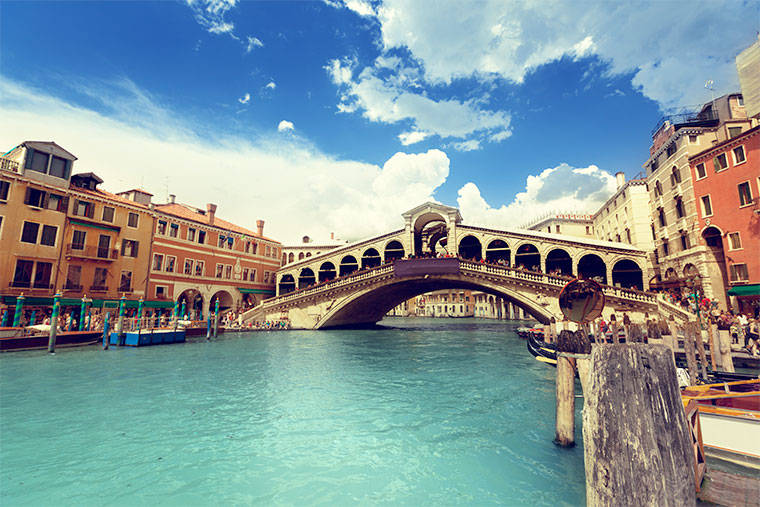
The area, originally named Rivo Alto meaning high riverbank in local dialect, was the first to be settled and quickly grew into the heart of commerce. Besides the market, established there in 1097, it was also the financial, wholesale and judicial centre of the city with many importers, lenders and magistrates having offices or warehouses there.
But in the early days, the only way to cross the 10-foot deep Grand Canal was by gondola. Several traghetti ferries operated, taking locals to and fro between the different districts. And traffic was understandably busy at the Rialto, so the Venetians decided to build a better crossing to increase trade.
But the first bridge, built at the narrowest part of the Grand Canal, wasn’t so much a bridge as a pontoon across boats lashed together. And it wasn’t called the Rialto either. Built in 1180 it was nicknamed the “bridge of the coin,” or Ponte della Monetà, as you had to pay a small coin to cross and it was near the Venetian Mint.
By the 1200s business at the Rialto was booming. Trade in spices and medicinal herbs was making many fortunes. And clearly the floating bridge was no longer adequate so authorities replaced it with a wooden one on stilts.
But the second bridge only lasted around 50 years until civil revolt and fire practically destroyed it in 1310. A third was built but that collapsed in 1444 under the weight of the crowd eagerly awaiting the Marchioness of Ferrara’s wedding flotilla. And another two -now named the Rialto Bridge – were built; with shops and a central drawbridge to let high-masted trade galleons through. But the fifth incarnation finally collapsed in 1524. Venice really wasn’t having much luck with its wooden bridge building!
Building a stone bridge at the Rialto
Discussion eventually turned to stone, literally. But there were concerns that a stone bridge would be too heavy for the muddy canal banks to support. So a competition was launched in 1551 and invitations sent out to the best architects, sculptors and designers, asking for solutions to the Venetian problem.
Sansovino, Scamozzi and Fra Giocondo, who had all designed prestigious public buildings before, submitted drawings. As did classical architect Palladio and the legendary polymath Michelangelo. Indeed Michel-angelo’s design can still be seen at his old home, Casa Buonaroti, in Florence. But all the drawings were for multiple arched bridges with supports dropping down into the canal that would have obstructed traffic.
Only one person, the aptly named Antonio da Ponte, suggested an audacious single span stone bridge. It would require 12,000 wooden stakes to be driven into the canal banks to construct a foundation solid enough on which to build. And its design closely mirrored the old wood bridge including 24 shops and a central portico. But most importantly, it would provide a strong figurative and literal bridge between the commercial Rialto and the civic district of St Mark’s.
From the outset, the project was beset by nay-sayers, including rival architect Sansovino who predicted ruin. One local was so lacking in faith of Da Ponte’s abilities that she apparently threatened to set herself on fire if the bridge succeeded. And local folklore even tells how Da Ponte made a deal with the devil, leading to the death of his wife and child, to guarantee that the stone bridge stood strong. Whatever the truth, the ponte that we still see today was finally constructed in just 2 short years opening in 1591.
And ultimately, despite the doubters, the 6th and final Rialto Bridge has been a great success. It’s stood the structural test of time over the last 425 years; cannons were even fired from its Istrian stone steps during rioting in 1797! And it continued to be the only bridge across the Grand Canal until 1854, although another three have since been added. It’s now enjoying a well-earned restoration funded by fashion tycoon Renzo Rosso. And hopefully when it’s unveiled later this summer, the thousands of people who continue to traverse the humpback bridge may just stop a while to admire its gleaming balustrades or unique design and wonder about its glorious history. It’s a true architectural and historical highlight of any visit!
